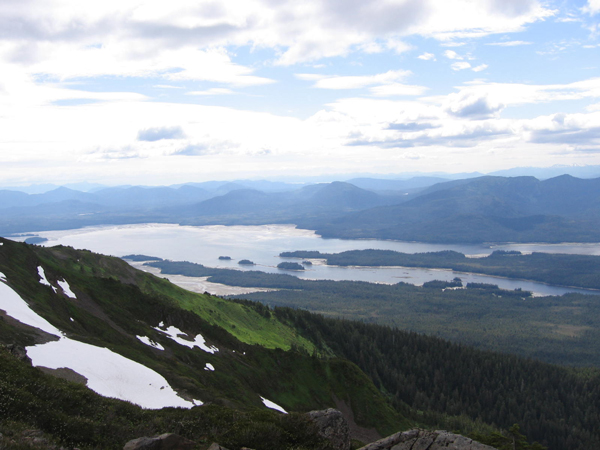
A large soil clean-up project at a former Cold War mountaintop radio site near Petersburg is underway this summer. A contractor for the U.S. Air Force is removing soil contaminated by fuel and building debris left at the site after it’s decommissioning almost three decades ago.
The site was a manned Air Force communications station, one of 18 built in Alaska during the 1950s. It was part of a Cold War-era early warning system called White Alice used to relay radio communications from Clear Air Force base in Alaska to Colorado Springs fifty years ago. It’s on Kupreanof Island, just south of Ohmer Slough on Duncan Canal, about eight miles west of Petersburg. The Duncan Canal station began relaying radio signals in 1960. It was deactivated in 1976 and the buildings were removed in 1986.
The Air Force already removed over 100 dumped fuel barrels from that area in 2000. Other fuel drums, demolished buildings, trash and chemical contaminants remain. A contractor working for the Air Force documented PCBs, fuel, chemicals and heavy metals in the soil and groundwater.
Lori Roy is project manager with the US. Air Force and said the contaminated soil was more than expected. “We went out and characterized what we thought was pretty good. But of course we usually see that it’s more than anticipated. So we want to ensure that we are cleaning up and getting everything so we are doing all kinds of excavation and confirmation sampling to make sure that we come away clean and we’ve done our good job out there.”
The main contractor on the job is a company called Bhate. They’re working on land that’s part of the Tongass National Forest, managed by the U.S. Forest Service. The mountaintop site is currently used by AT&T Alascom for a commercial communication facility. It’s a relatively remote area just off the Tonka road system and there are a few recreational cabins nearby.
Roy said the contractor is not using the Tonka log transfer facility to transport the contaminated soil because of an ongoing logging operation in the area. Instead the contractor is landing a barge closer to the site in Duncan Canal. “We brought all our stuff in though Tonka and now we’re using the alternate area to take the super sacks of soil out. So if people are boating along the shoreline they’ll see tons of supersacks over there in the Duncan Canal area and we are coming in and out of that side of the island.”
Those super sacks are large polypropylene bags for the contaminated dirt. Roy estimated they’ll be filling around one thousand super sacks with 785 cubic yards of soil. It will be shipped to a landfill in Arlington, Oregon.
The cleanup involves three separate areas, a dump site, a fuel storage area and a site with debris from demolition of the buildings. Roy said after the excavation the sites will be refilled with clean soil. “It will not have the current vegetation on it but there will be no gaping holes.All the excavations will be filled and tilled. So it will all be smooth.”
Roy said the contractor had not anticipated the daily record rainfall that’s hit the area several days this summer and that’s created some problems for excavating the soil. She did not have a dollar amount for the project – the final costs won’t be known until the work is complete. However an environemental decision document on the work estimated the overall price tag could be three and a half million dollars, once the three sites are cleaned up, filled with new soil and tested.
The cleanup is about halfway done and Roy hoped the project would be finished by the end of September. Soil sampling at the site will continue for a few years after.
Joe Viechnicki is a reporter at KFSK in Petersburg.




